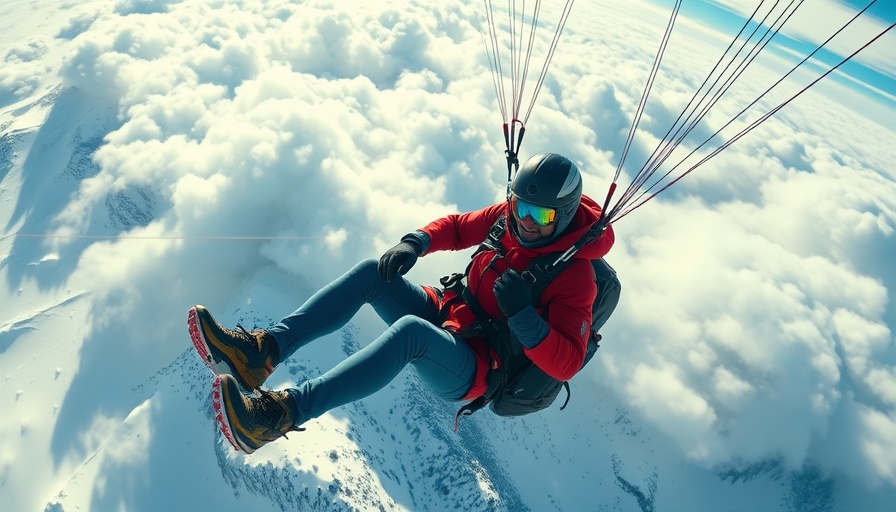
The Shocking Incident: What Really Happened in the Air?
The story of Peng Yujian's near-fatal paragliding incident captured the world's attention. On May 24, the paraglider was testing equipment at 10,000 feet when an unexpected meteorological phenomenon, known as 'cloud suck,' suddenly pulled him up to the astonishing altitude of 28,000 feet, nearly as high as the summit of Mount Everest. The perilous journey, which lasted over an hour, exposed him to bone-chilling temperatures of -40 degrees Celsius—conditions so severe that survival seemed doubtful. Peng's snow-beaten face, filled with confusion, became a vivid emblem of the ordeal.
Exploring AI’s Role in the Viral Video
However, the video footage that made these events public was recently called into question. A digital security firm, GetReal, indicated there's a significant chance that the footage was partly AI-generated. They stated that the first five seconds of the video showed signs of manipulation, with odd inconsistencies in the paraglider's helmet and other equipment. Such revelations raise urgent concerns in the media landscape: what happens when technology can create realistic yet deceptive visuals, and how can we discern reality from fabrication?
Historical Context: Similar High-Altitude Events
This incident isn’t without precedent. In 2007, a similar case unfolded when German paraglider Ewa Wisnierska survived a storm that pulled her up to about 33,000 feet—an unprecedented altitude for an unplanned flight. Such stories underline the reality that, while extraordinary, Peng Yujian's encounter is not entirely beyond the realm of possibility in the world of adventure sports.
The Future of Journalism in the Age of AI
The implications of AI-generated content on journalism are profound. As tools for content creation evolve, so too does the responsibility of media outlets to verify the authenticity of information. Major networks such as NBC and the BBC took down their coverage of the incident once doubts arose regarding the video's legitimacy. This reflects an acute awareness of the potential for misinformation in our digital age, where stunning visuals can be crafted with deceptive ease.
Navigating Misinformation: What It Means for Viewers
For the target audience—tech-savvy consumers and adventurers—this raises critical questions about the nature of trust. The rise of AI in content generation doesn’t just embellish reality; it calls into question the very fabric of how we perceive truth in media. Understanding how to navigate misinformation becomes pivotal, pushing viewers to critically evaluate the sources and authenticity behind sensational headlines.
Confronting Public Perception: Expert Insights
Expert opinions on the dilemma vary. Abhinav Dhall, an AI researcher, notes that even the most seemingly reliable footage can be artificial. The fact that experts struggle to differentiate between AI-crafted content and reality should ignite dialogue about media literacy in the public sphere. As technology progresses, so does the necessity for consumers to develop a discerning eye to effectively engage with technology.
Actionable Insights: How to Stay Informed
The ongoing evolution of AI emphasizes the importance of vigilance and critical thinking among consumers. Being informed requires more than just passive consumption of content. Audiences should engage with multiple sources, question the authenticity of visuals, and understand the potential limitations and biases that technology may introduce. This critical awareness can empower viewers amid a sea of information that might not be what it seems.
Conclusion: A Call for Vigilance in Digital Consumption
As we navigate a landscape increasingly penetrated by sophisticated AI, understanding the intersection between reality and fabrication is essential. Engaging deeply with content, questioning its origins, and remaining open to diverse perspectives will lay the groundwork for informed consumption in the digital age. Center-stage in this dialogue is a reminder that while technology enhances our experiences, it also necessitates responsibility from both content creators and consumers alike.
 Add Row
Add Row  Add
Add 




 Add Row
Add Row  Add
Add 
Write A Comment